Generally, the dress code business attire also called business formal or boardroom attire is the most formal thing you will encounter in a professional office environment. Even if it’s an unspoken dress code, it can often be required in traditional white-collar environments.
If you know the business attire dress code, you’re always appropriately dressed for client meetings, network meetings, board meetings, or general office occasions. You can wear it if you have to attend the funeral or if you are in court.
The History Of Business Attire
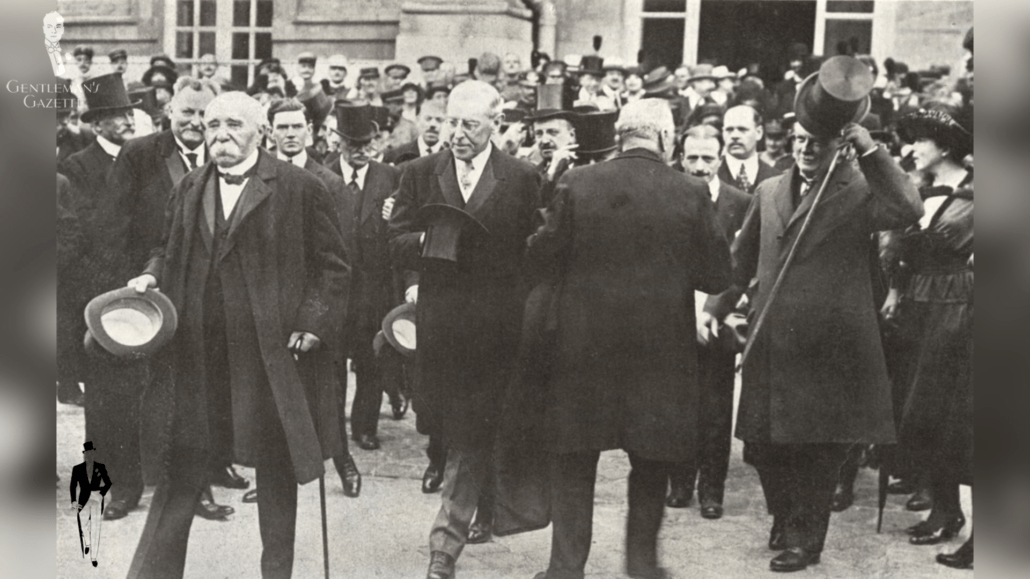
Until a few decades ago, the only appropriate garment for the office used to be a suit, meaning a matching pair of pants and jacket out of the same fabric in a dark color. This was a solid, sometimes faint stripes, there was always a conservative suit with a white or light blue dress shirt and some form of neckwear such as a tie.

At the turn of the century, business attire was really only worn by the elite and the majority of the workers were blue-collar workers. In the very early days, a black frock coat was the proper business attire with black pants or cashmere striped pants and white shirts and dark neckwear. Later on, the morning coat became more popular and then that was followed by the lounge suit.
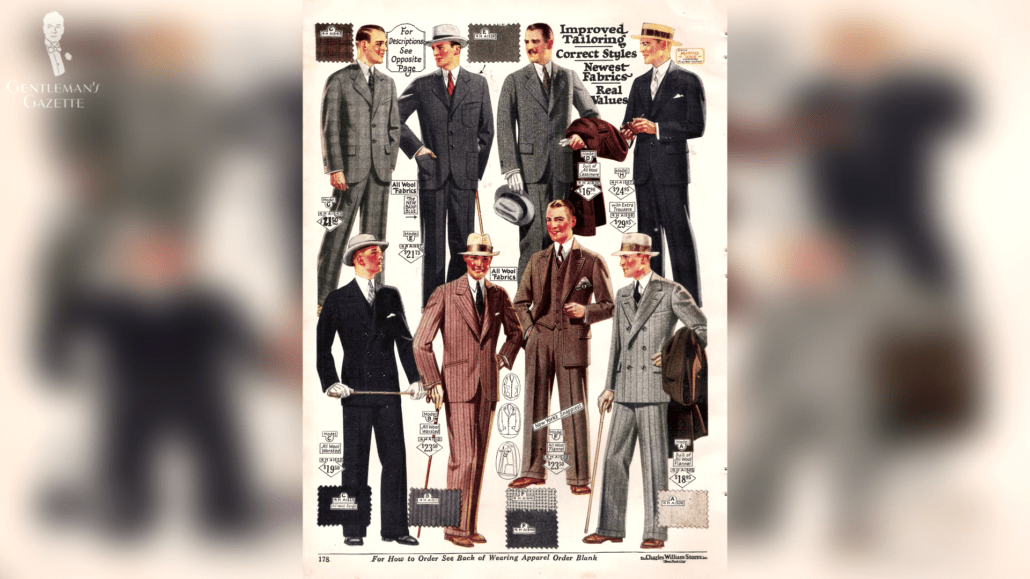
1920’s-1930’s
Suits, as we know them today, became more popular and the morning coat became outdated and was really only worn by very old gentlemen who were just stuck with their tradition. At that point in time, business suit fabrics were still quite heavy and offices were usually cooler which is why you would see many men wear a waistcoat, it just helped to keep them warmer.
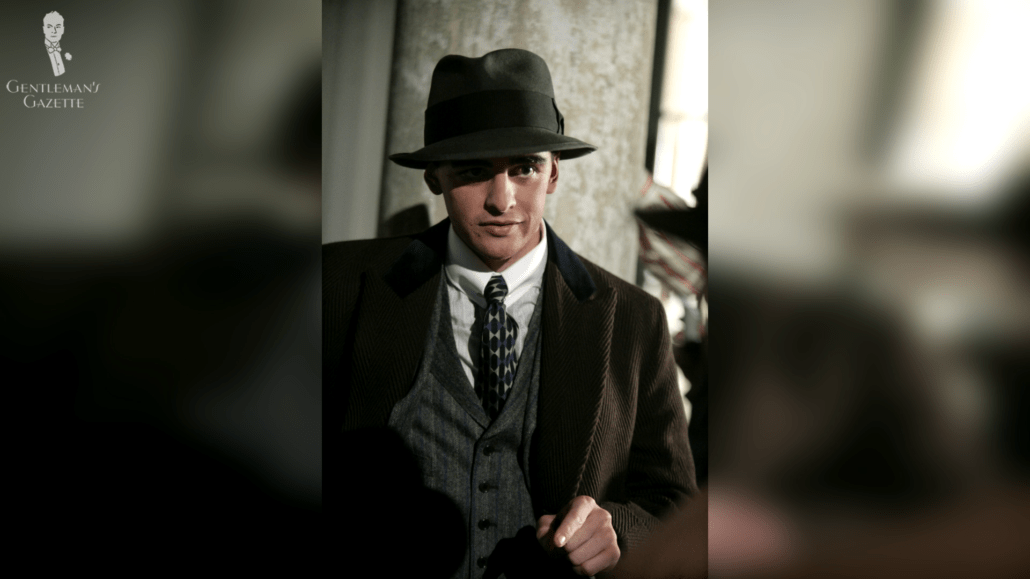
Just like with any war, the conventions afterward were a lot more relaxed than before and that was also reflected in the office environment. So basically, that meant hats would slowly but surely disappear, the waistcoat would disappear, but you would still wear a dark suit, a necktie that was somewhat conservative, as well as black leather dress shoes.
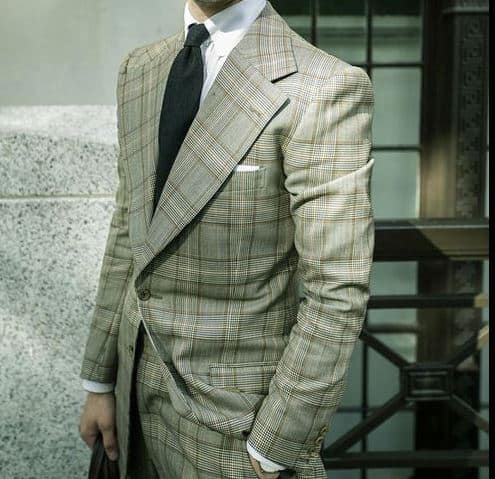
1950’s – 1980’s
The styles changed, lapel widths changed, the width of the tie changed, but other than that, the basic core principles of dark suit, white or light blue shirt, conservative tie, and black leather dress shoes, remained the same. Think of the saying “No brown in town”, that indicated that brown shoes were never appropriate for the office.

In the 80s and 90s, the power suit became popular; you’ve probably seen the movie Wall Street with Michael Douglas pulling off that style. Even though the power suit fell out of favor, afterwards, the core of the dress code business attire still holds true today.
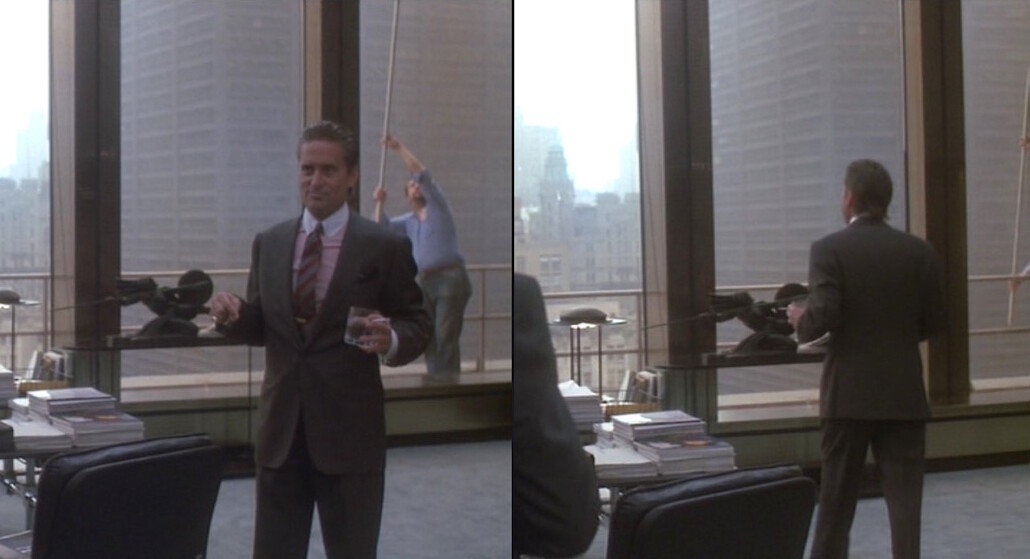
In a nutshell, that means you wear a dark business suit, either a two-piece suit or a three-piece suit with a waistcoat. The shirt should be white or light blue or maybe a pastel color, it can be striped with a very small pattern, but overall, solids are preferable. You go with a conservative necktie either a dark red or dark blue, can be solid or a small pattern or stripes. You could either go with suspenders with a fishtail back or you can have a belt that matches the color of the shoes or you can just go without any of those two things and just have side adjusters on your trousers. It also means you have over the calf dress socks that don’t expose your hairy legs in the office and optionally, you can have a pocket square; it should have hand rolled edges and be folded in a TV fold. Now that’s just a broad overview, let’s dive a little deeper and define what all those things mean.
What Is A Dark Business Suit?
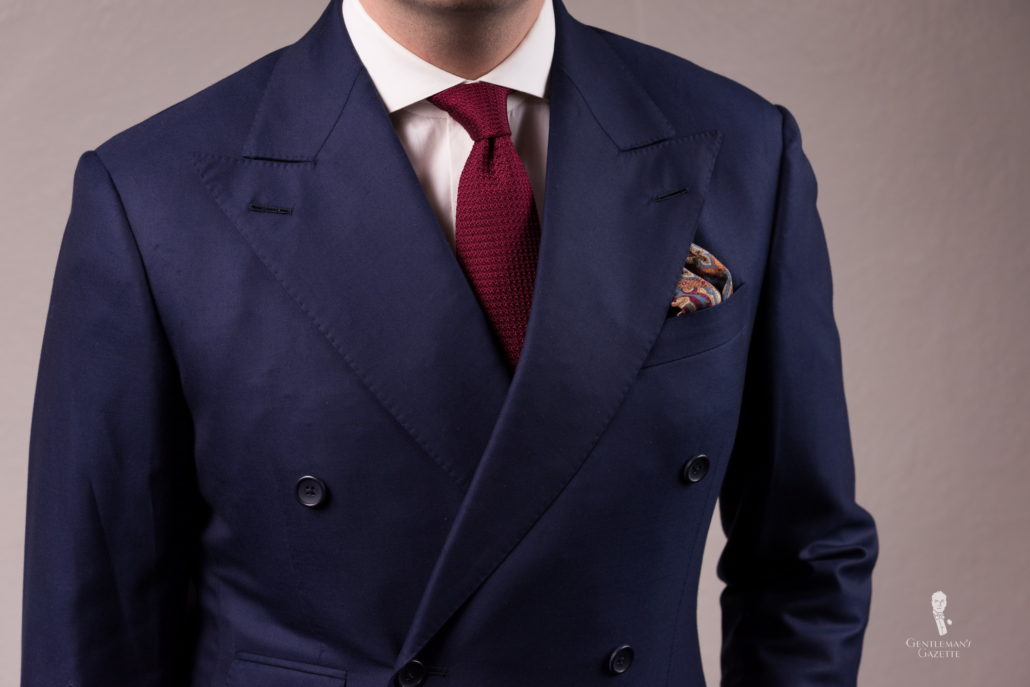
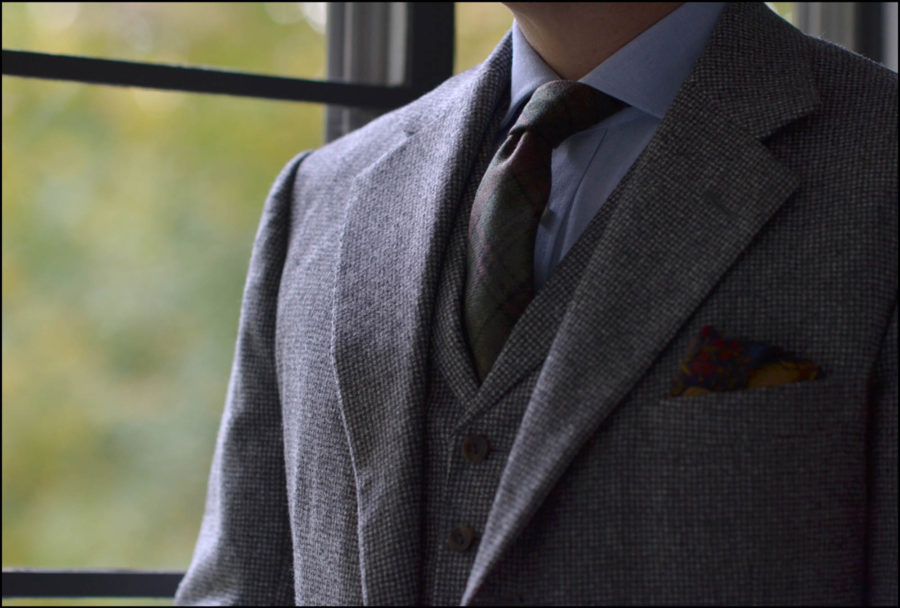
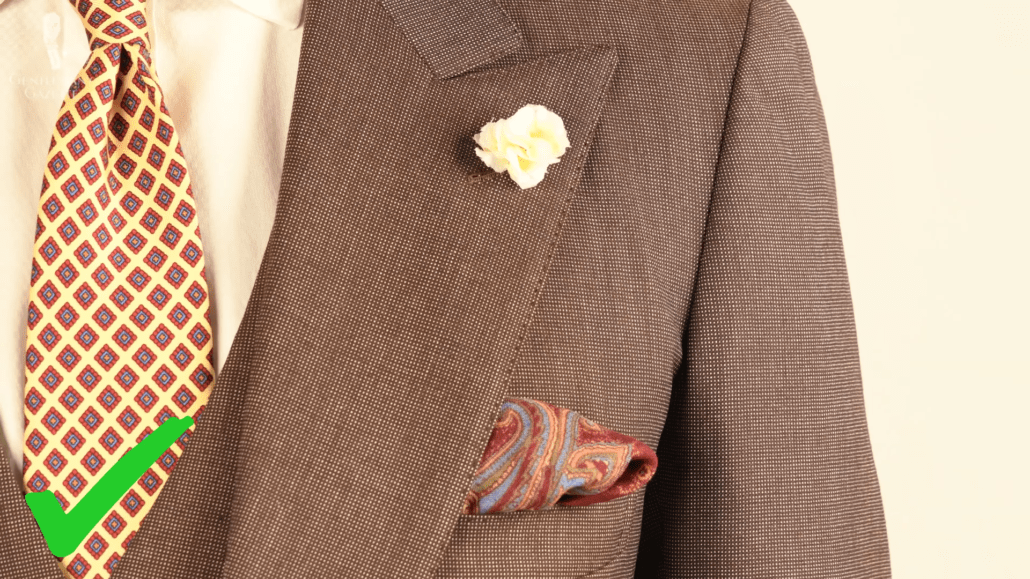
Ideal Colors
In terms of colors, that can be anything from navy to dark blue, charcoal, dark gray, medium gray, or light gray. The most classic form are just solid suits in one color, however, you can also have smaller micro patterns such as needle head or pinpoint.
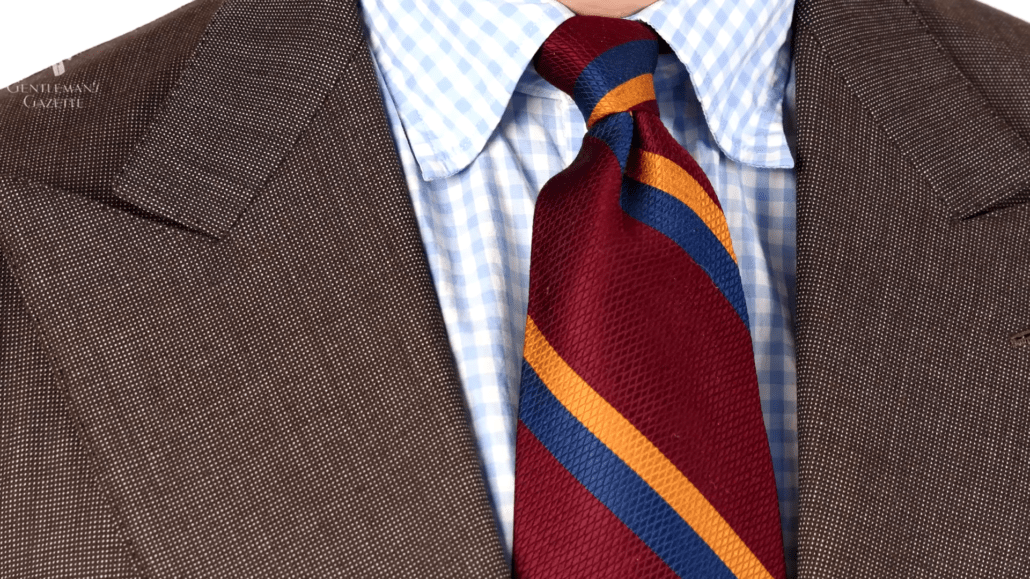
They have two colors when you look at them up close but from afar, it looks like a uniform solid color. You can also go with a more textured fabric such as sharkskin or a hopsack.
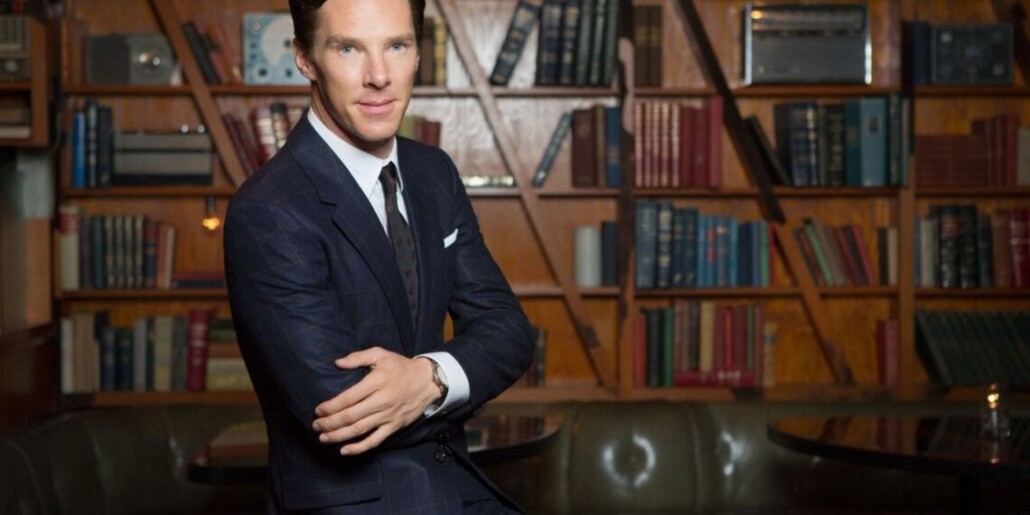
If you want to go a little fancier, you can have a faint pinstripe or a chalk stripe, you can even go with a Prince of Wales check on a smaller scale and nothing with bold colored over plaids in pink. Another option would be a faint windowpane but again, less is more and it is a conservative business suit so when in doubt, always scale it down a notch.
Suit Styles
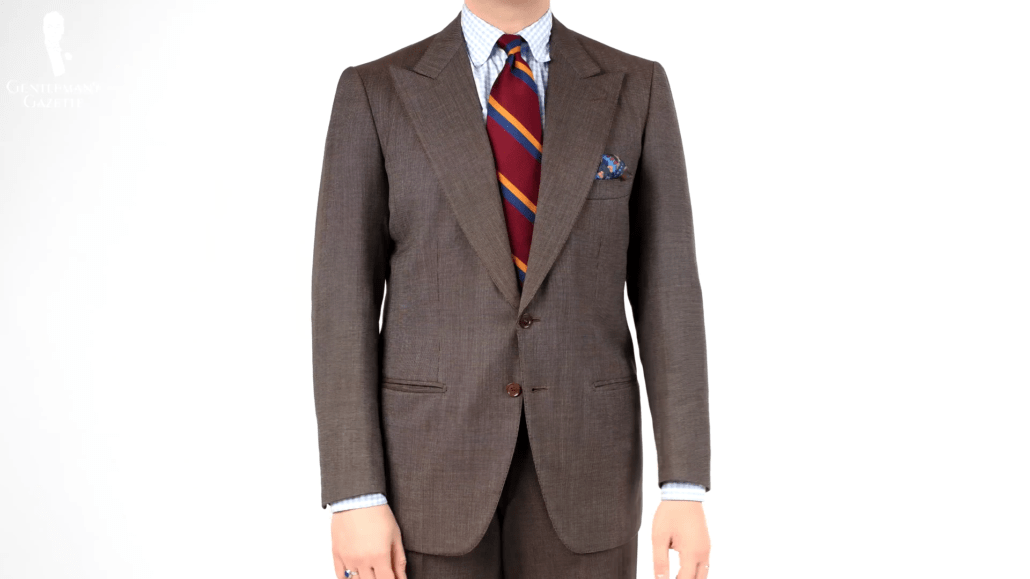
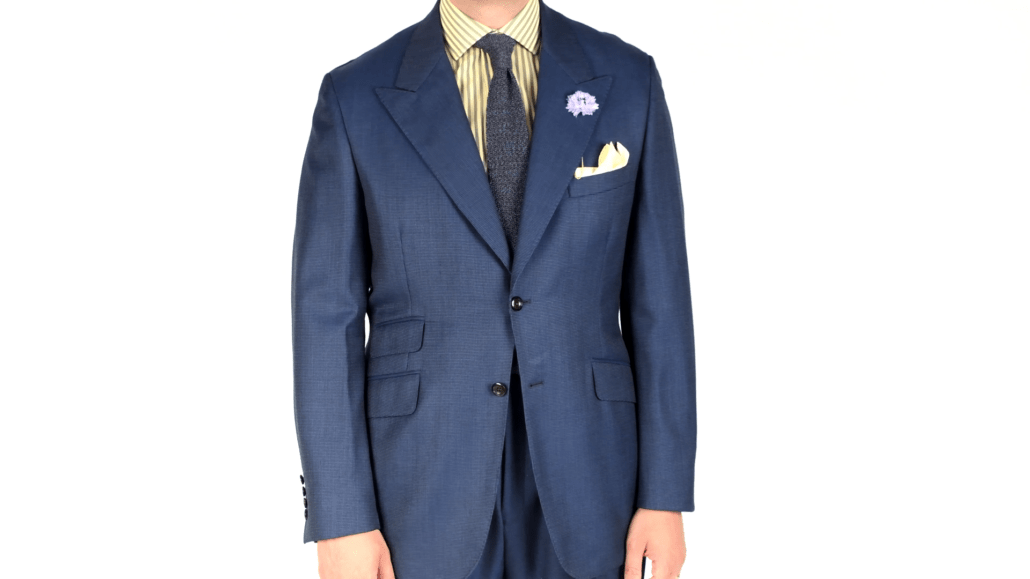
You can have two-piece suits or three-piece suits. If you have a two-piece suit that is single breasted, I suggest you go with a two-button jacket, you can also go with a three-row two or a simple single-breasted three-button jacket. Always opt for a notch lapel because that’s more traditional. I’d also opt for side vents, skip center vents because they’re meant for horseback riding. The side vents are much better, you can put your hands in your pocket and it doesn’t expose your bum.
If you go with the double-breasted jackets, go with a six-button configuration where two are closed or maybe a four-button configuration where two are closed but avoid just a single row of buttons because that’s too fashion-forward for a traditional business attire dress code.
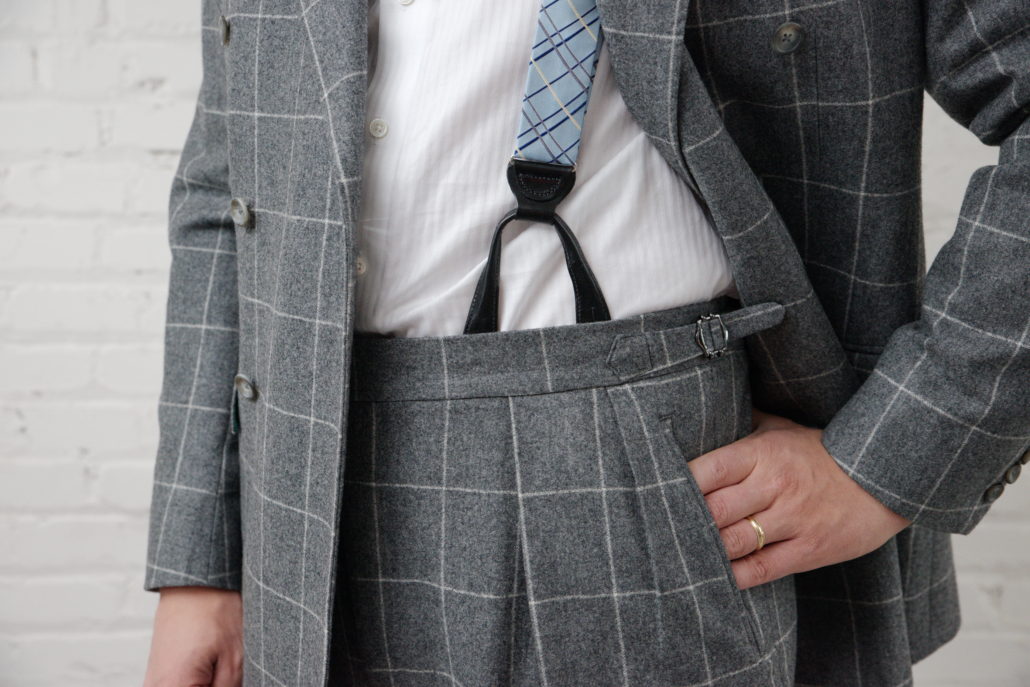
For your pants or slacks or trousers, you can have a flat front, you can have a pleated front. Personally, I’m a big fan of inward pleats because it’s more comfortable to sit in them. Your pants can have cuffs or no cuffs; if you go without cuffs, some consider it to be a little more formal. The advantage of cuffs or turn-ups is that they add a little more weight which makes your trousers hang and drape nicely.
Even though combinations, let’s say between a blazer and a pair of chinos, are very acceptable in most offices today, it’s technically not appropriate to wear a combination when a dress code requires business attire.
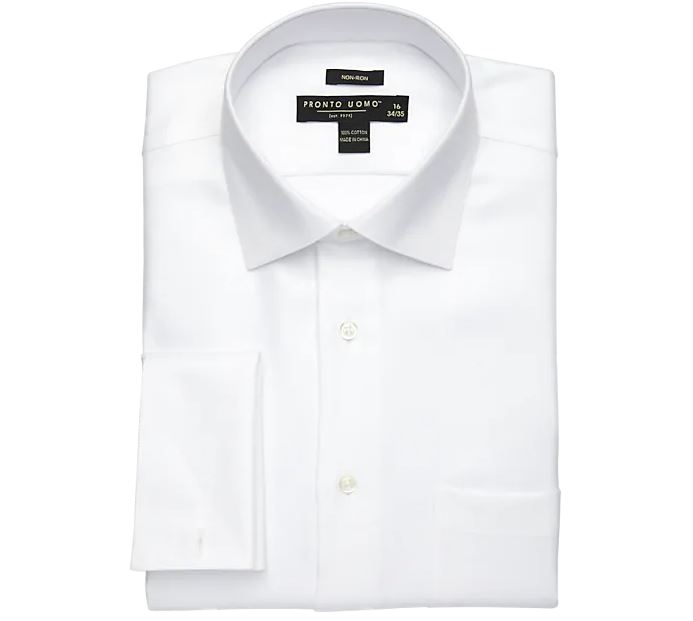
Dress Shirts
In terms of dress shirts, ideally you want to opt for French cuffs for cufflinks and the majority should be white and light blue.
Accessories
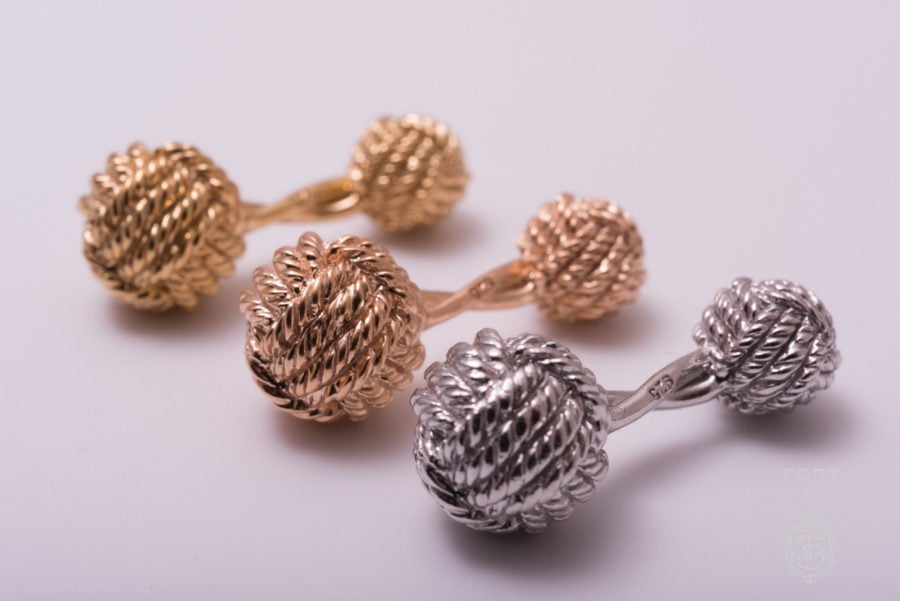
For cufflinks, avoid any kind of diamond cufflinks or colored stone or anything flashy. Stay with simple traditional gold and silver cufflinks; not combined but either/or. I suggest going with knot cufflinks because they’ve been around for a long time, they’re not flashy yet they work with everything in your wardrobe from your tweed coat to your black tie ensemble.
With a pocket square, the white pocket square is a classic staple, you could also invest in some silk pocket squares in subtle patterns and more muted colors that pick up tones of your neckties.
A necktie is probably the only way to introduce different colors into your outfit so traditionally, most business ties are either blue or some form of red or burgundy. If you want to branch out, you can go with green, yellow, purple, or other shades. Again, this is your chance to shine. The traditional material for ties is silk, usually, they’re either printed or it could striped like a repp stripe for example, or it can be just a jacquard weave in a classic muted pattern such as a stripe in silver and black which is the most formal, or you could have maybe a small Prince of Wales check which is very business appropriate.
For your socks, you traditionally want to match them with your pair of pants. You can also add a little bit of contrast by pairing the color of your socks to the color of your tie. In this day and age, that is acceptable.
Shoes
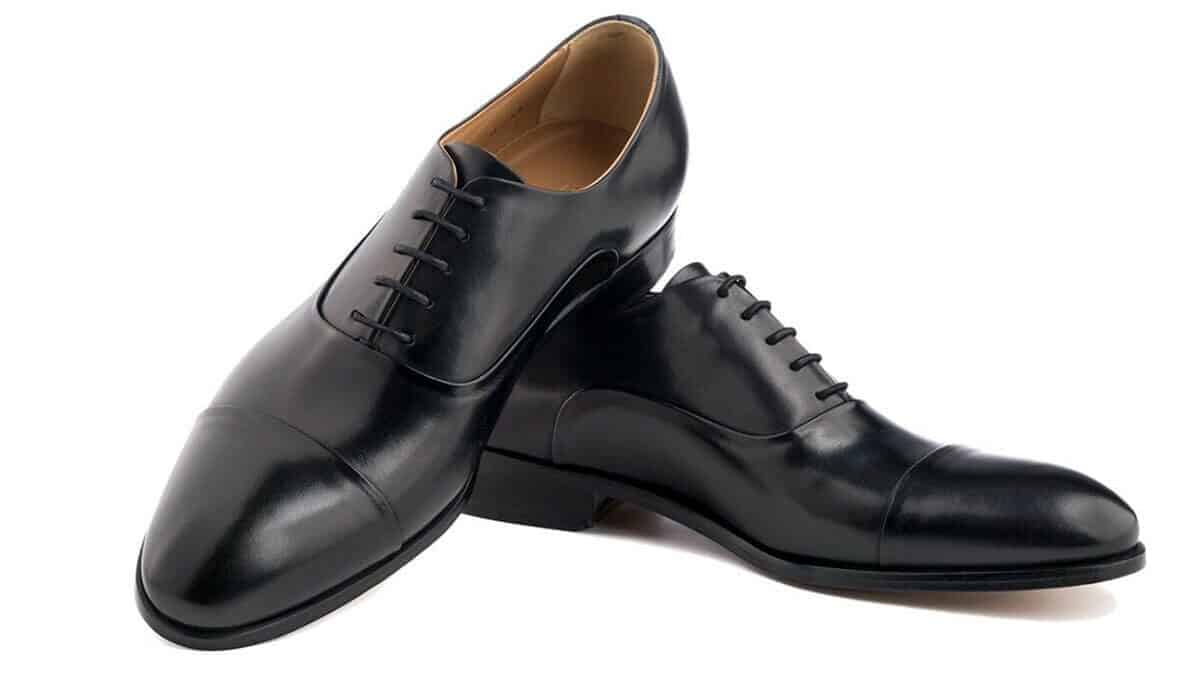
The first shoe you should in invest in for business attire is the black cap toe oxford without any form of broguing; that means no hole perforations. It’s a classic staple, it always looks good. Once you have that, you can also invest in a quarter brogue oxford that means there’s just a little bit of perforation along the cap toe or you can have a half brogue where there’s a little more perforation. You can also go with a full black oxford wingtip and in my opinion, it’s a little too much and I prefer the quarter brogue and a half brogue but if you want to go for it, no problem. If you have more voluminous feet, you may want to go with a derby shoe which is technically a little less formal but if it’s in black color and has a nice leather sole, it’s still perfectly acceptable.
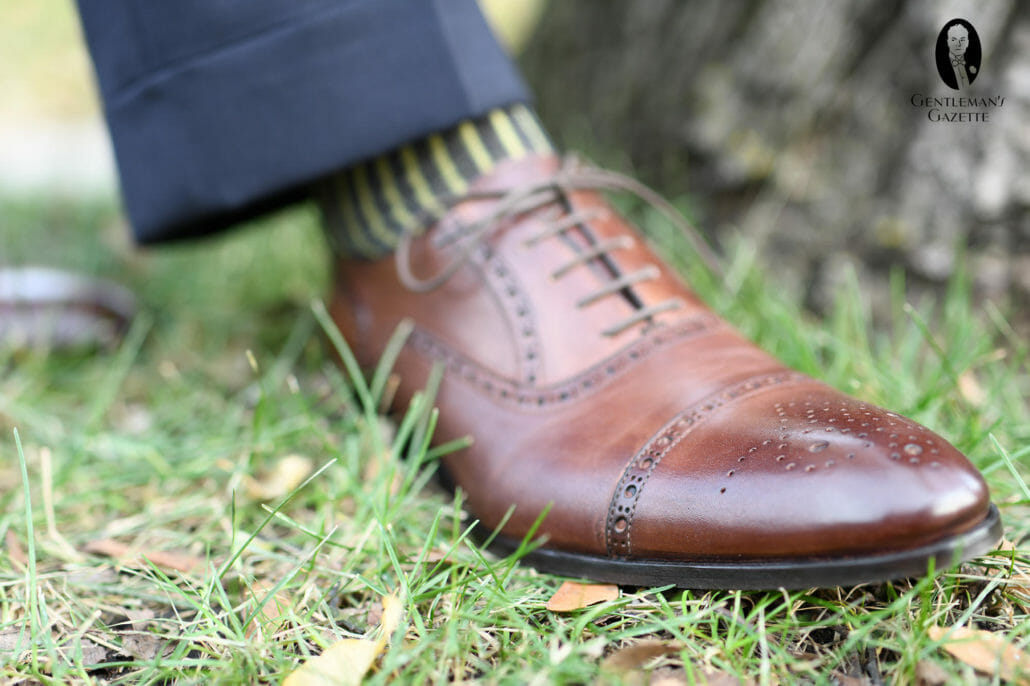
In terms of construction, most classic business shoes are either Goodyear welted or if they’re from Italy, they can be Blake rapid stitched. In general, Goodyear welted soles are a little thicker, they’re harder to break in but they also last for quite a long time. Italian shoes that are blake rapid stitch typically have a thinner sole.
While black is still the color of choice for business wear, you can also wear brown shoes. For dress code business attire, I would suggest you stick with darker shades of brown such as chocolate brown and you can also go with a dark oxblood color which can alternatively be worn with very casual outfits but also with business attire. Even though you can wear very light tan shoes in 95% of all offices today, I would stay clear of them if the dress code calls for business attire.
How To Stand Out Without Being Over The Top
Now as you can see, the dress code for business attire is rather strict and you may find it hard to stand out in a subtle sophisticated way. So in my experience, here are the good ways to stand out with business attire in a professional manner that isn’t garish or over-the-top.
1. Faint Striped Suits Over Solids
Instead of just a plain solid suit, you can choose to wear a suit with a faint stripe. It’s different, its unique, it’s appropriate for business attire. You can also add a matching waistcoat to make it more formal and more unique. Most business suits today are two-piece suits so adding that matching vest really elevates you from the crowd.
2. Make Your Accessories Count
Go with cufflinks, maybe go with a slightly darker stone. Brighter colors such as yellow obviously pop more than a dark navy. Alternatively, you can also play with a texture rather than a plain silk tie, you can go with a grenadine tie because it has a wonderful texture. In any case, you want to avoid super bright pink ties or bright orange ties because that’s garish and over-the-top. Instead, maybe opt for a dark purple maybe with a light Paisley on it or a bottle green tie with a micropattern.
Maybe you want to wear a pinstripe suit and add a knit tie to it. If you do that, go for a solid color that is maybe in the blue family because the texture itself is similar to grenadine but it’s a little stronger and it’s already some kind of a statement. Don’t go overboard and have a two-tone knit tie with your business attire.
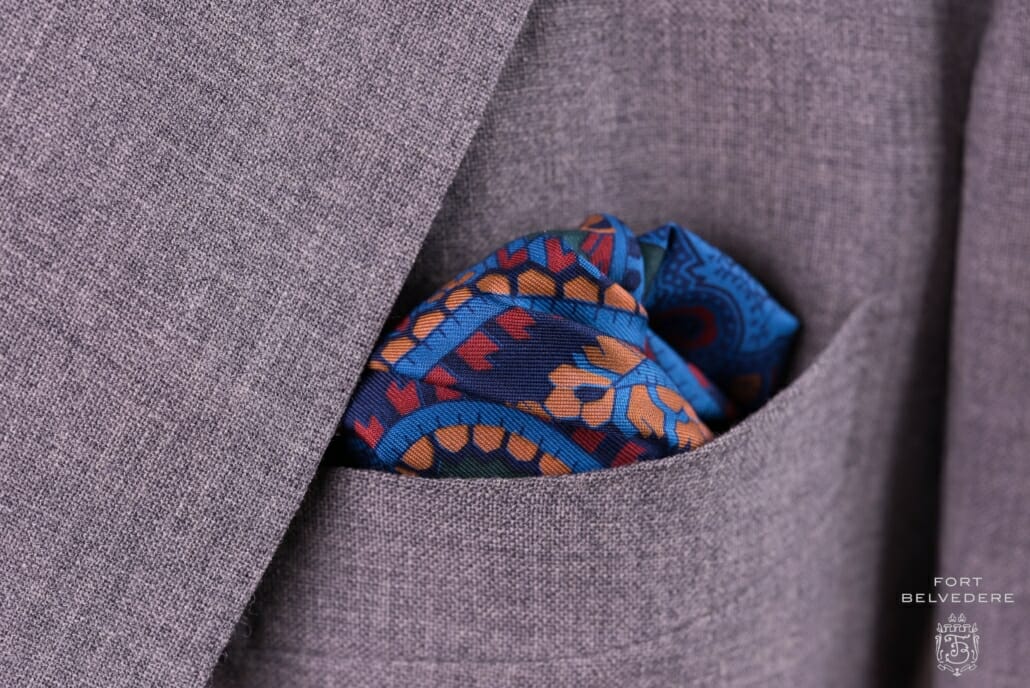
You could also choose a subtle pocket square. The white linen pocket square is great but having maybe a silk pocket square or a silk wool one with a paisley pattern that picks up the color of your tie is a great addition.
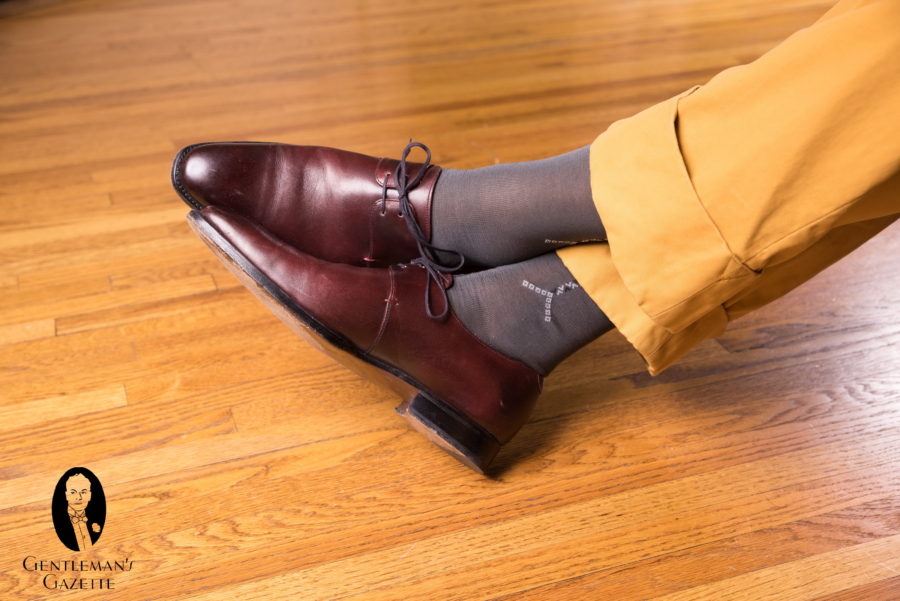
3. Opt For Oxblood Shoes
When it comes to shoes I think oxblood shoes are very underrated because they’re very dark yet they have a really nice color depth. They work well with navy and gray suits and they’re just slightly different without being as bright as let’s say tan shoes. Adding a cordovan is a great way to stand out with business attire.
Outfit Rundown
I’m wearing a slightly more progressive business outfit. It’s not the general solid dark business suit with a white shirt and a Glencheck tie instead, I opted for a plain striped suit. It’s a three-piece suit, it’s a relatively lightweight fabric. It has peak lapels, one button and it has a double-breasted waistcoat. My tie picks up those red tones. It’s a burgundy tie with a very small polka dot which is very business appropriate. I keep the shirt white but I opted for a round club collar. I’m going with French cuffs and I’m wearing cufflinks in sterling silver and carnelian which pick up the red tones. And my socks pick up those red and white tones of my shirt and my accessories and they’re a good barrier between my black half brogue dress shoes.
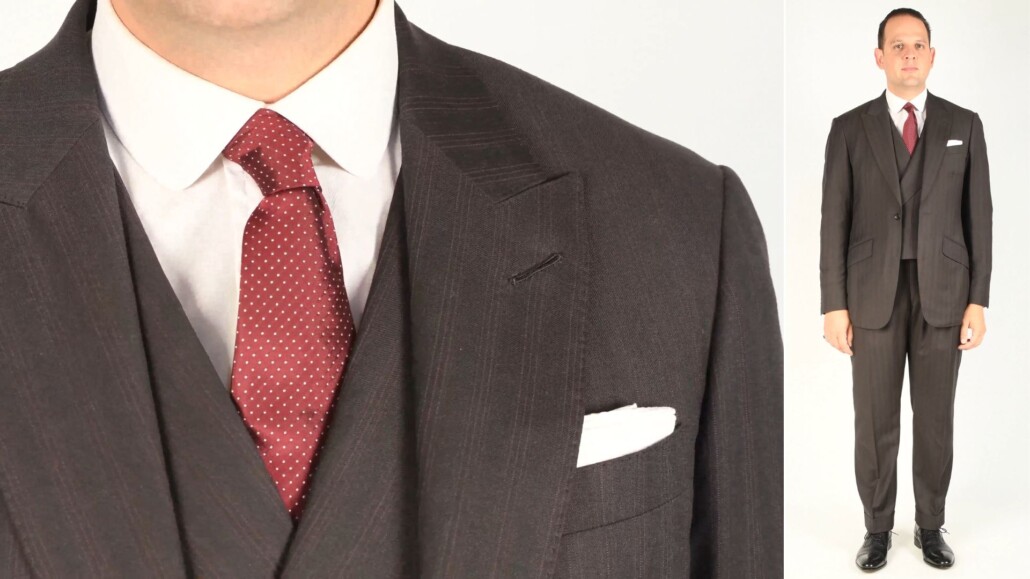
I also opted for a pinky ring and a white pocket square with the TV fold, a crown fold would have been too ostentatious. The TV fold is very classic and this is something that I could wear to any kind of office environment I would always be appropriately dressed and in most offices, to be frank, I’d probably be somewhat overdressed but still within the realm of what’s acceptable.
What makes your business attire ensemble? Share your outfit combos below!
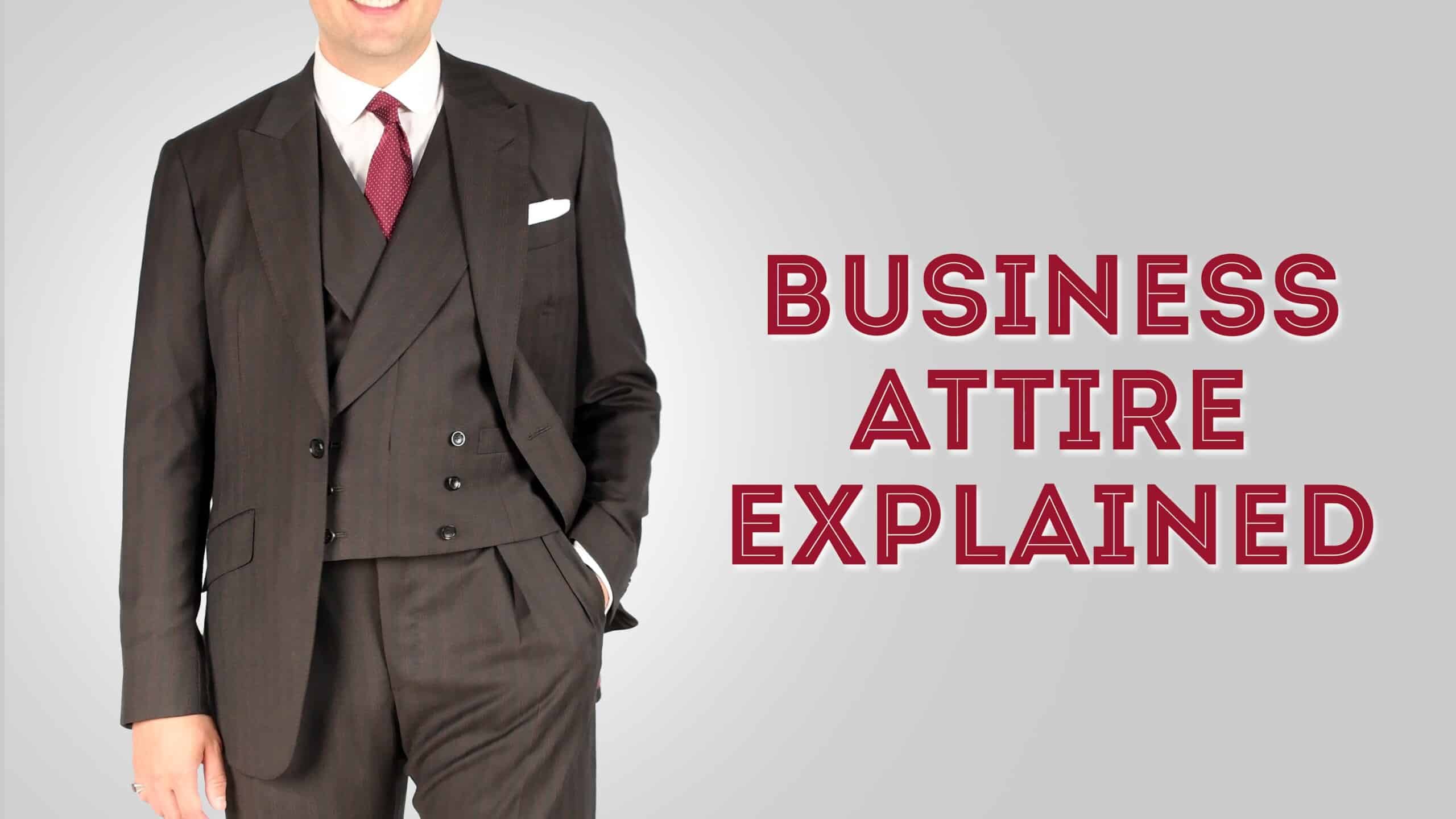
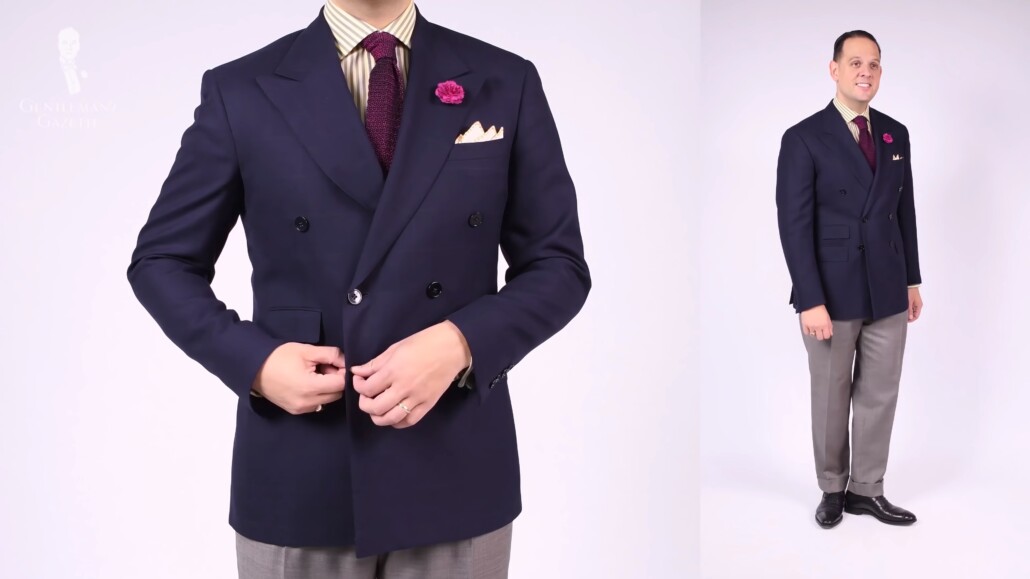
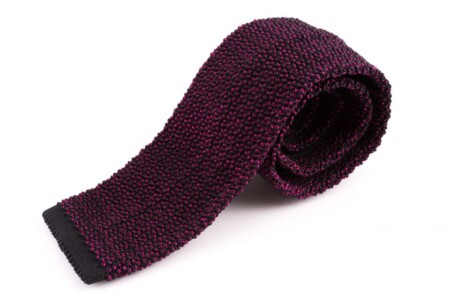
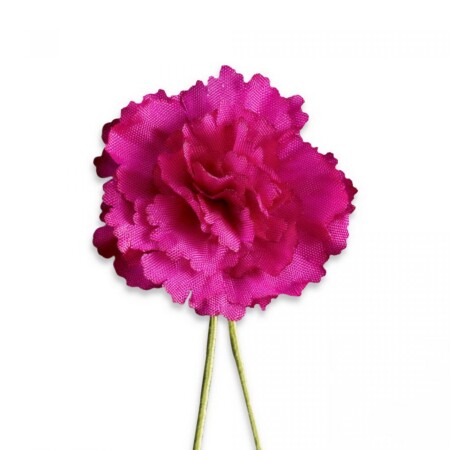
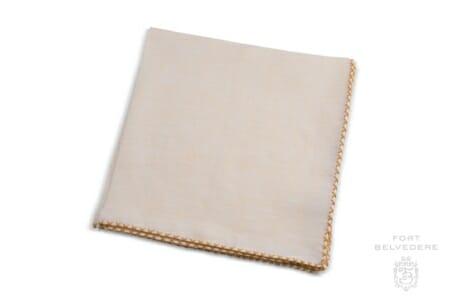
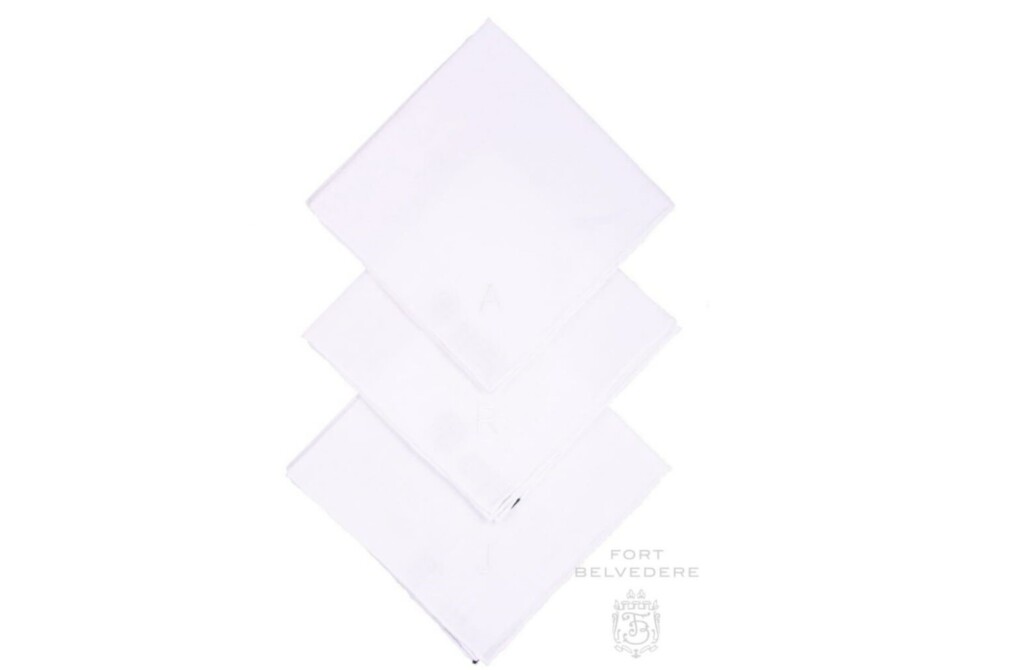
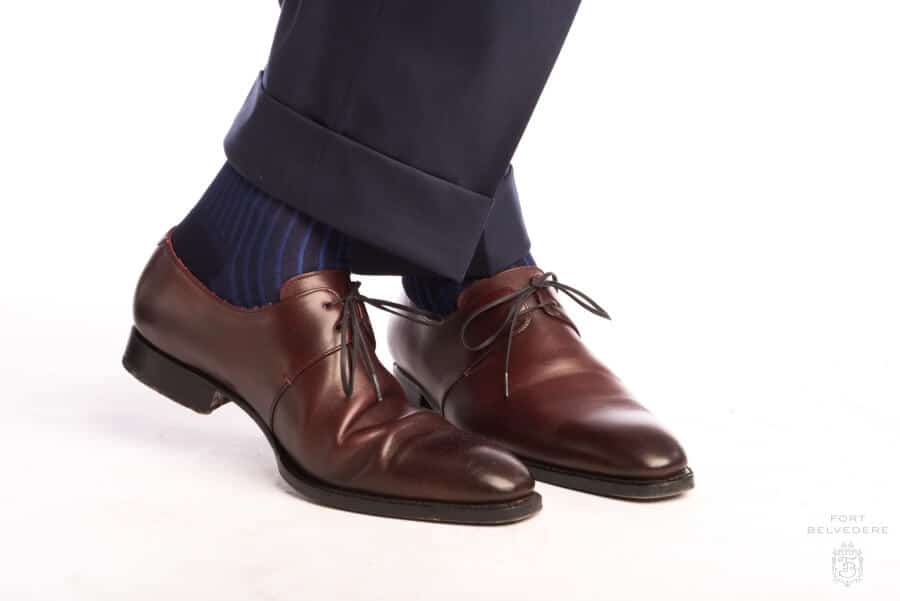
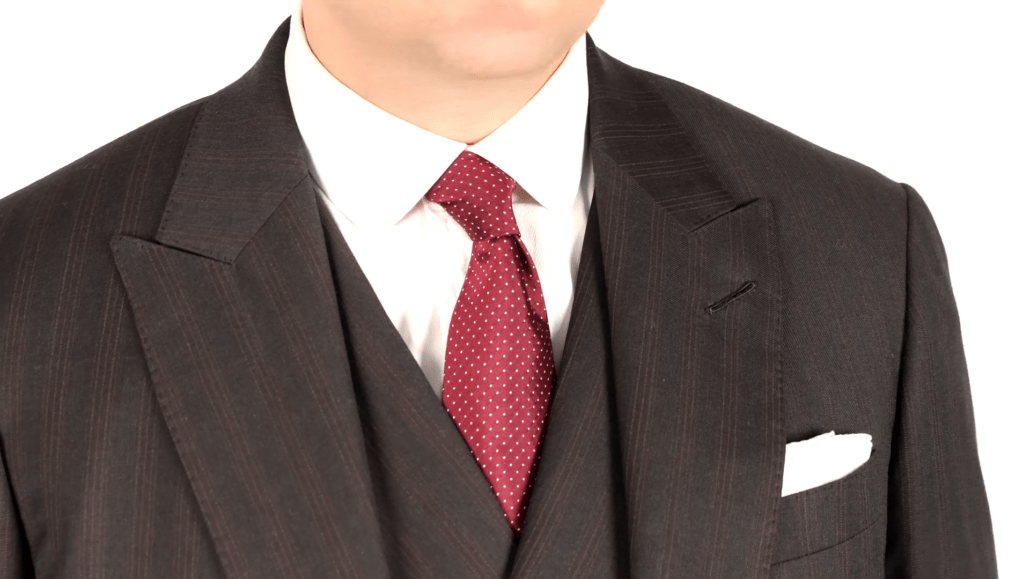
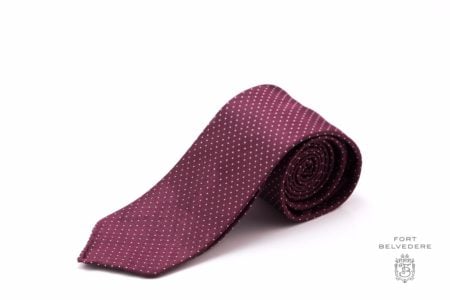
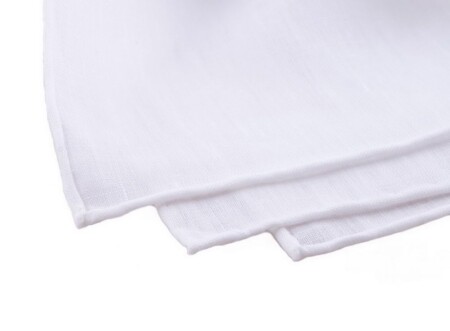
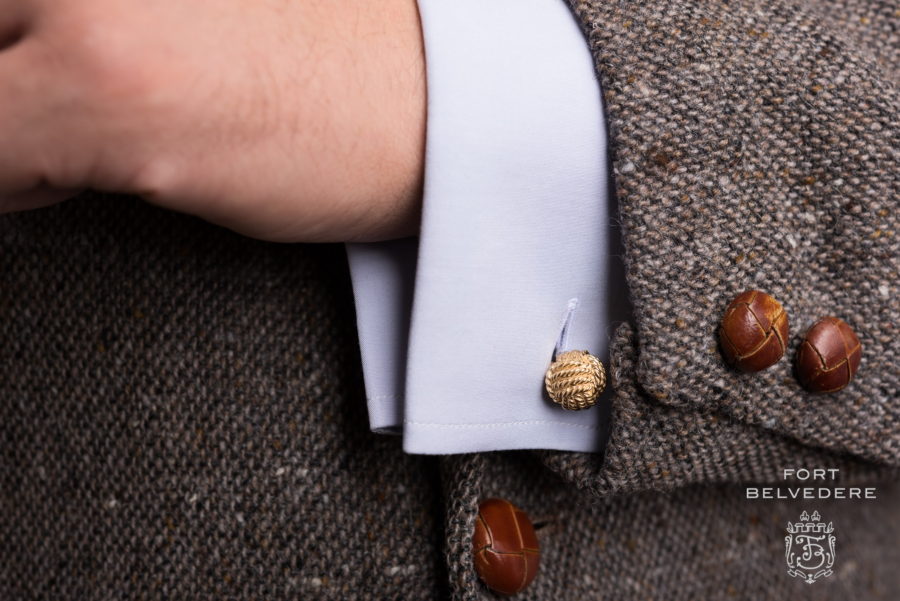
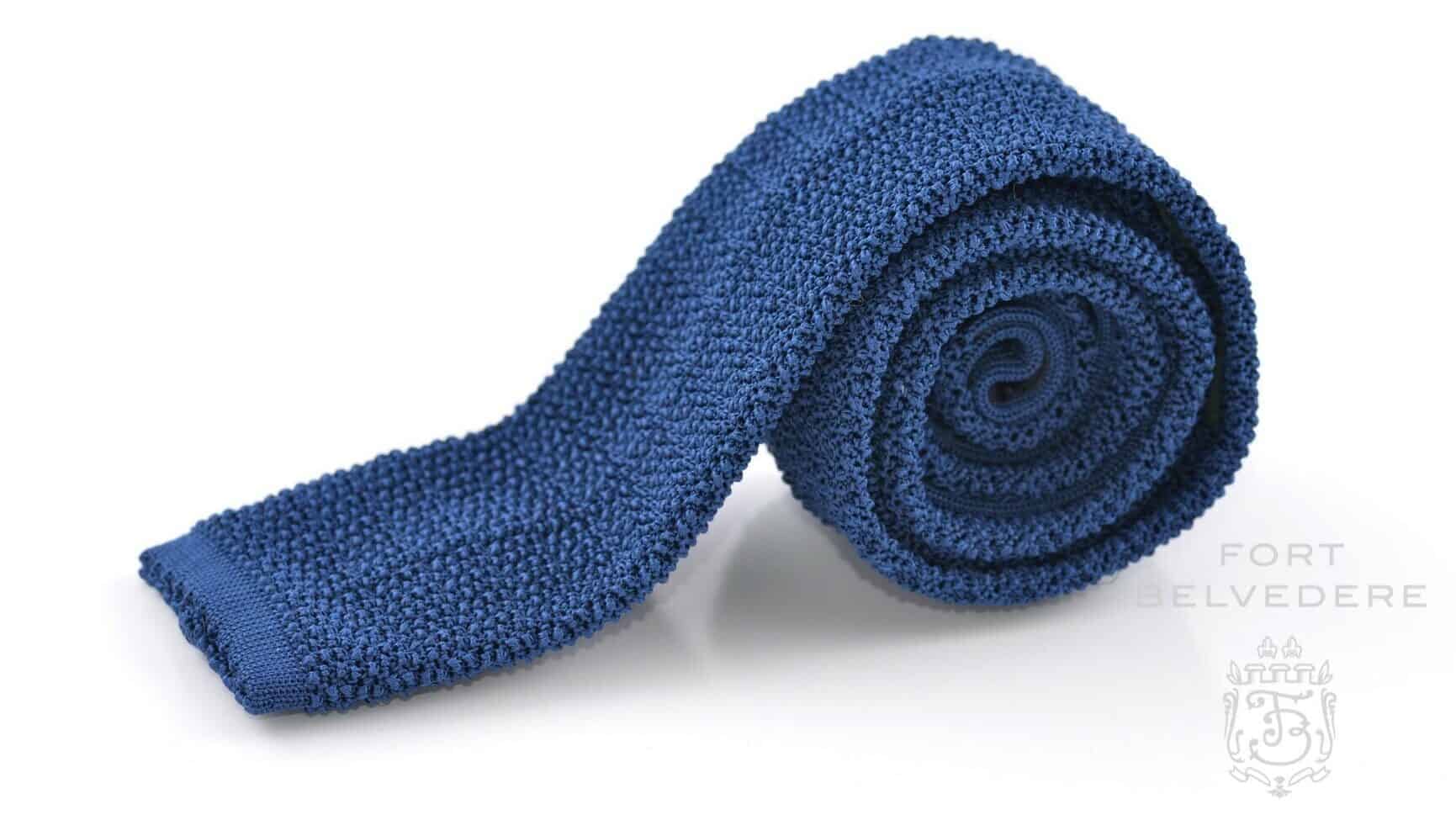
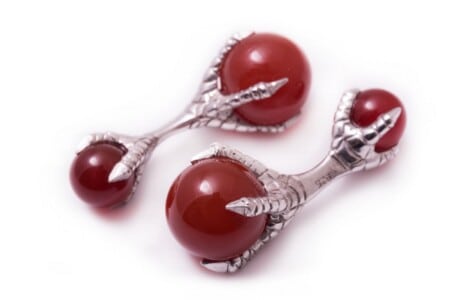
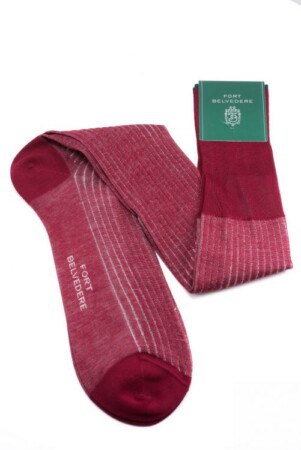
Business attire used to be so easy.
I used to worked in the City of London and I wore suits in muted shades: either grey or dark blue. The cloth might have been a subtle pinstripe or birds-eye worsted but very understated.
Shirts were double/French cuffs and cufflinks are the only adornment. Button downs were not worn nor were collar pins or tab collars. The shirtings were either plain colours: mainly white or blue, but maybe the odd pale pink or yellow but very pale. The go-to shirting was bengal stripe.
Ties were very sober and some times gold tie pins were used.
Pants/trousers were worn with cuffs or turn-ups and held up with braces/suspenders. The braces buttoned on: no clip-ons and no belt loops – there were buckled side adjuster. City suits bore shibboleths of a particular traditional style.
Shoes were always black and usually Oxford lace-ups with leather soles although monks or semi-brogues were worn. Gucci loafers did become popular with a few flashier chaps. Wing tips were not worn in the City: the welt is a tad too thick for our tastes.
Black or grey socks, but a few guys would wear brighter colours for effect.
The joy of this was that everybody wore it and I could get dressed in the dark.
Now I have to guess what the other parties at a meeting are going to be wearing lest I appear somewhat over dressed.
What no picture of Cary Grant?
In my younger years, I always thought wingtips were more formal than cap toes. Possibly the greater complexity, both actual and visual. On the other hand, maturity demonstrates that simplicity itself can be and often is the more sanguine approach.
To think that during my one year working in the City in the 1980s, in my black wingtips, I was flouting custom and good taste. Oh well, my peers probably just chalked it up to “that Yank”.
Another good article. However, side adjusters and braces are redundant – like braces and a belt. If you have proper side adjusters, or better yet, Daks tops, no braces or belt is required.
Keep up the good work!